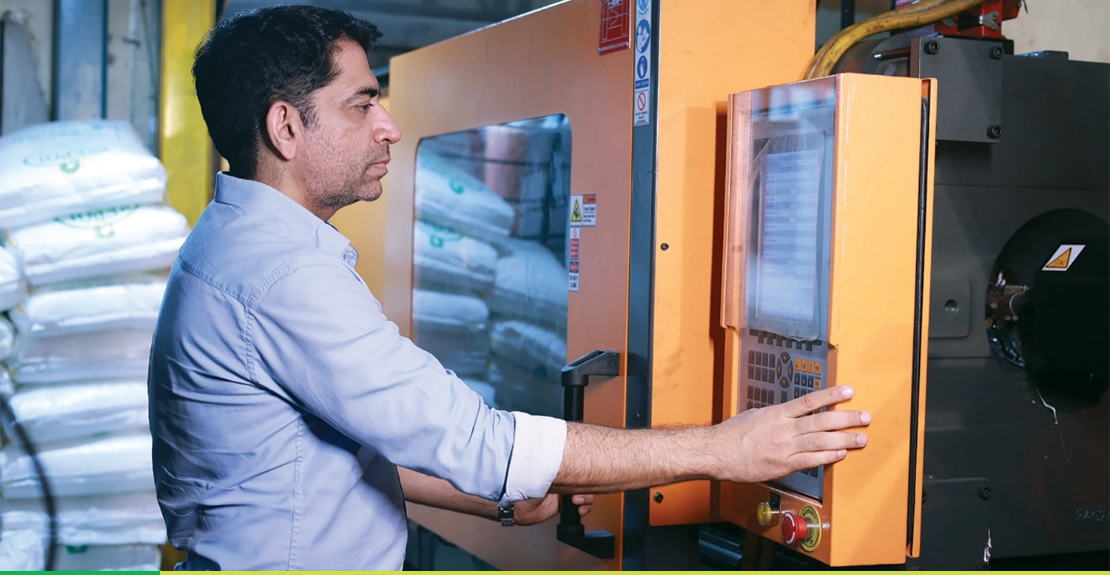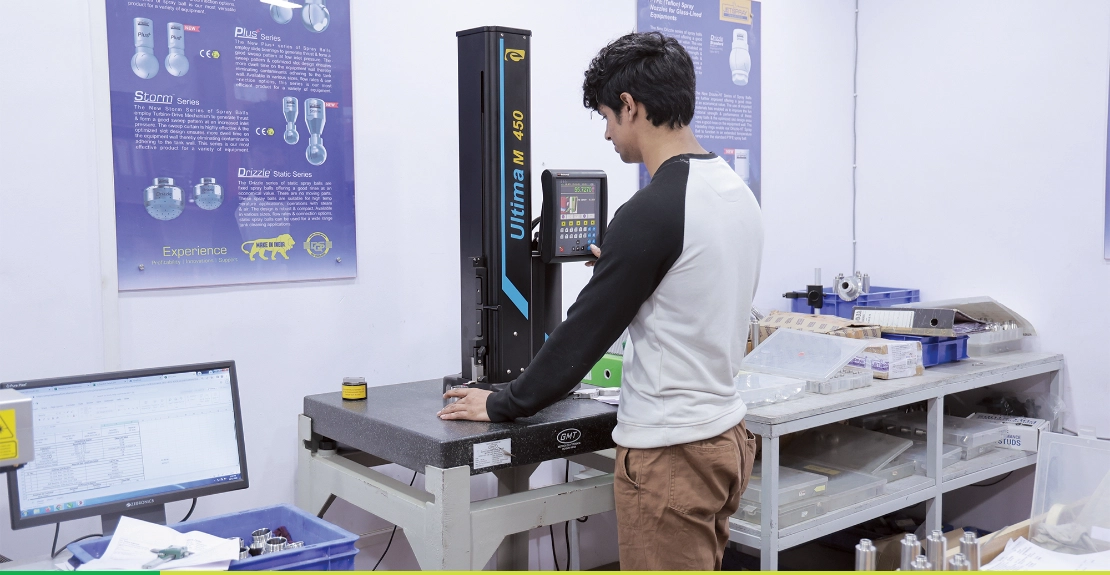As one of the fastest growing major economies in the world with significant headroom for growth, India clocked a robust 8.2% economic growth in FY2024, as per the provisional estimates of the National Statistical Office (NSO). The Indian economy contended with uncertainties in the external environment with policy interventions focussed on supporting sustainable livelihoods and fostering a more inclusive and dynamic global economy. Growth in excess of 7% has been the trend for the past three years.
MSMEs contribute nearly one-third to India’s GDP, and is termed as one of the key sectors contributing to the nation’s consistent growth, and one of the key pillars of the government’s Make in India mission. The government’s continued thrust on formalisation is furthering the formal credit penetration in the sector.
Being by far the largest providers of employment following agriculture, the MSME sector contributes significantly to the economy and is a backbone of the national economic structure, imparting resilience to ward off global uncertainties.
The sector also acts as a catalyst for the development of prominent industries, export promotion, and alleviation of economic imbalances through development of rural and semi-urban areas.
A closer look at the sector unveils the vital trends shaping the MSME segment:
In FY2024, the MSME sector aggressively tapped formal sources of funds to support its business growth momentum. Outstanding credit availed by MSMEs from Scheduled Commercial Banks (SCBs) under priority sector lending increased by 24.1% at ₹28.04 lakh crore.
Microfinance portfolio displayed 18.4% growth in FY2024, with NBFC-MFIs contributing to 41% of the portfolio, followed by Scheduled Commercial Banks (SCBs) with 31% share.
SMEs registered a record 196 equity issuances (IPOs) in the primary capital market during FY2024, mobilising a total of ₹6,095 crore, which was 2.6 times the funds mobilised in FY2023.
The quality of MSME credit portfolio of SCBs improved in FY2024 with the Gross Non-Performing Assets (GNPA) ratio improving to 4.5% in March 2024, in comparison with 6.8% in March 2023 and 9.3% in March 2022, reflecting an underlying improvement in profit performance. The Microfinance portfolio of MFIs and NBFCs also witnessed an improvement in its delinquency ratio.
The government has undertaken several formalisation and digitalisation initiatives to boost business potential and improve the competitiveness of MSMEs. This includes the launch of programmes such as Udyam Assist Platform, MSME Champions Portal, Government e-Marketplace (GeM), Trade Receivables Discounting System (TReDS), among others.
The drive to identify unrecognised MSMEs and usher them under the ambit of the formal lending system gained further momentum in FY2024 with Udyam Assist Platform gaining traction.

While the short-term growth prospects of Indian MSMEs look promising, the sector struggles to sustain the growth momentum. MSMEs are more vulnerable to economic turbulence than their larger counterparts.
A large number of IMEs have been brought into the fold of formalisation, by registering them on the Udyam Assist Platform. Yet, a large percentage of the 6.3 crore MSMEs (as per the 73rd round of NSSO survey of 2015-16) continue to remain outside the policy net, with many enterprises lacking access to affordable capital. Apart from capital flow restraints, the growth of MSMEs continues to be stifled by limited market reach and competition, inadequate infrastructure, skilled labour shortages, lack of innovation and technological upgradation, rapid climate change risks and transition to net zero emissions.
Key initiatives of the government such as Skill India, Make in India and Digital India have helped foster the progress of the MSME sector by facilitating labour upskilling, and building state-of-the-art technologies that enables the ease of doing business. Apart from labour and digital capital, the government continues to work towards improving the availability of timely and adequate credit to MSMEs.
Major MSME financing initiatives and credit guarantee schemes such as Credit Guarantee Scheme (CGS) for MSEs managed by CGTMSE, Credit Guarantee Fund for Micro Units (CGFMU) managed by NCGTC, PM Mudra Yojana managed by MUDRA, Open Credit Enablement Network (OCEN) are delivering excellent results.
In FY2024, CGTMSE achieved a new milestone with its guarantees reaching ₹2.03 lakh crore. This symbolises a strong 94% growth over ₹1.04 lakh crore guarantees achieved in FY2023.
Simultaneously, loans sanctioned under the PM MUDRA Yojana increased by 18.5% during the year at ₹5.4 lakh crore, up from ₹4.6 lakh crore in the earlier financial year.
Financial technology or Fintech has turned out to be revolutionary in resolving financing issues and leading the paradigm shift in digitising MSMEs. India Stack, the digital infrastructure launched to further the concept of a more digital and cashless economy has widened the access of financial services to citisens and MSMEs. Today, Fintechs provide ingenious solutions that help small businesses become more competitive, streamline their operations, and obtain affordable and effective financial services. Fintech solutions have the ability to help MSMEs move past roadblocks and capitalise on novel opportunities for business expansion.
Along with solving the financing issues for MSMEs, another solution is to shorten their trade receivable days, thereby reducing the external fund requirement for working capital. There is an increasing awareness of the four TReDS platforms operating in India, Receivables Exchange of India Ltd (RXIL), Invoicemart, M1 Exchange and C2FO. With this, MSMEs are beginning to utilise these platforms more aggressively for financing/discounting their trade receivables.
In December 2023, in order to help MSMEs embrace green technology and AI, three schemes were launched by the government - MSME GIFT scheme, MSE SPICE and MSME SCIP. Besides, initiatives under the umbrella MSME Champions scheme such as MSME Sustainable (ZED), MSME Innovative (for Incubation, IPR, Design) and MSME Competitive (LEAN) are helping modernise their processes, reduce wastage, sharpen business competitiveness, and increase their reach in the domestic and global markets.
Making MSMEs globally competitive is another vision of the government for the industry, and this is being done by coordinating with various think tanks, while keeping its eye on leveraging technology. In March 2024, Niti Aayog released a roadmap to boost MSME exports, reiterating the need for improved financing, while also making a case for a single information data intelligence portal for exporters. This portal shall answer the potential exporters’ queries related to market such as tariffs, required paperwork, sources of finance, service providers, available incentives, and potential customers. One District One Product (ODOP) is another such transformative initiative which is expected to encourage cross-border e-commerce trade, helping the MSME sector realise its true export potential.

The MSME sector continues to remain poised to sustain its growth trajectory into FY2025, backed by strong domestic tailwinds. Moving ahead, MSMEs are expected to gain from the 7% growth expected in India’s GDP, backed by above normal monsoon expected, mellowing inflation, and strong corporate and bank balance sheets. India’s export prospects, however, remain lukewarm as the global economy continues to be sluggish. As per the World Trade Organisation (WTO), global merchandise trade is likely to grow by a meagre 2.6% in 2024. This forecast is likely to have a bearing on the performance of India’s MSME sector and its merchandise exports.
Union Budget 2024-25 has given special attention to MSMEs, particularly labour-intensive manufacturing, through financing, regulatory changes and technology support. The Budget has identified MSMEs as one of the four key focus areas and has announced a series of measures aimed at boosting the MSME sector. This focus is seen as vital assistance for survival and growth of the sector.
MSMEs will continue to play a critical role in shaping the destiny of the Indian economy, given their resilience, innovation and pivotal role played by them in fostering economic growth. Synergies between government initiatives, efforts by financial institutions to deliver innovative solutions and willingness of MSMEs to adapt to the changing environment are helping them scale up significantly and quickly, holding the key for their future growth.
The sector shows significant promise and has enormous potential to advance India’s economy, enabling it to reach its goal of USD 5 trillion in three years and USD 7 trillion by 2030. MSMEs are the growth engine of the nation, with the potential of creating a suitable and inclusive society, and with phenomenal influence in shaping India’s future. The pivot of innovation, employment and growth makes MSMEs well-positioned to transform the economic landscape and growth potential of India.
Copyright © 2024 Small Industries Development Bank of India(SIDBI)
Designed and Developed by RDX Digital